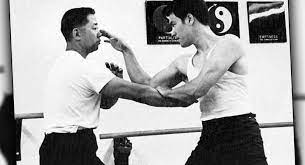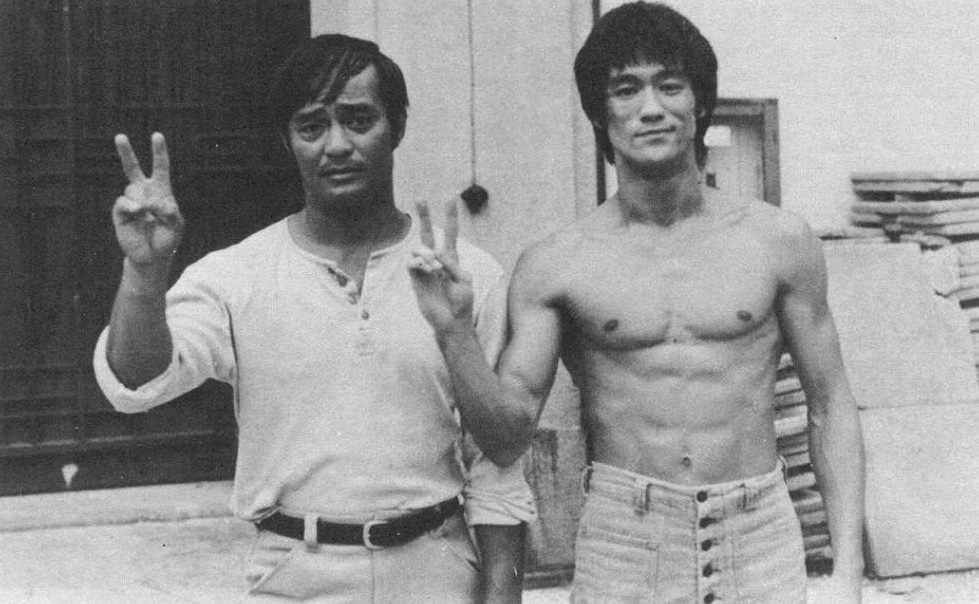Bruce Lee’s Jeet Kune Do (JKD) is not just a martial art; it’s a philosophy, a way of being. But within this dynamic system, two main branches have emerged: Original and Concepts. Understanding their differences can help you navigate the ever-flowing river of JKD and find the path that resonates with you.
I write this only to give information I am not worried about the politics or people slagging the other side off. I train both branches as they both offer something valuable.
Original Jeet Kune Do: Bruce Lee’s Blueprint
Imagine Bruce Lee, a whirlwind of movement and precision, his strikes lightning-fast and adaptable. This image represents the core of the Original. It’s the system Lee developed in his final years, emphasizing:
- Directness and efficiency: No unnecessary movements, just fluid, economical strikes that exploit the opponent’s weaknesses.
- Non-classical: Breaking free from the rigidity of traditional styles, JKD embraces adaptability and improvisation.
- Cultivating explosive energy through proper body mechanics and breathing.
- Tools, not techniques: Techniques are seen as tools to be adapted and refined, not rigid formulas.
Think of Original Jeet Kune Do as a sculptor chipping away at the unnecessary, revealing the core principles of effective combat.

Jeet Kune Do Concepts: Adding more flavours to the mix.
Following Bruce Lee’s death, his close student Dan Inosanto and others became custodians of Jeet Kune Do. They didn’t see it as a static system but as a flowing river, constantly evolving and adapting. This led to the development of Jeet Kune Do Concepts, which builds upon the Original Jeet Kune Do foundation while incorporating:
- Wider influences: Jeet Kune Do Concepts draws inspiration from various martial arts like Filipino Kali, grappling, and boxing, enriching its toolset.
- Adaptability and expression: Individuality is encouraged, with practitioners encouraged to find their own expression of JKD principles.
- Emphasis on trapping and grappling: Jeet Kune Do Concepts delves deeper into close-range combat, using joint locks and takedowns to control the opponent.

Imagine JKD Concepts as the river after a spring rain, its tributaries adding new dimensions to its flow.
So, which is “better”?
The beauty of JKD is that there’s no single “better” path. Both Original JKD and JKD Concepts offer valuable tools and perspectives. The choice depends on your individual goals:
- If you seek a direct and efficient fighting system rooted in Bruce Lee’s principles, Original JKD might be your calling.
- If you crave a more fluid and adaptable approach and are open to exploring diverse martial arts influences, JKD Concepts might resonate with you.
Ultimately, both branches are part of the same flowing river. Whether you prefer the sculpted banks of Original JKD or the dynamic tributaries of JKD Concepts, remember that the true essence of JKD lies in its continuous evolution and self-discovery.
Key points on your Jeet Kune Do journey.
- Jeet Kune Do is a journey, not a destination. Embrace the process of learning and evolving.
- Respect all paths within JKD, recognizing the value of different perspectives.
- Find your own expression of JKD, one that aligns with your goals and individuality.
Let the river of Jeet Kune Do flow through you, shaping you into the martial artist you were meant to be.
Bonus Tip: Explore the teachings of Bruce Lee and his students like Dan Inosanto to gain a deeper understanding of both Original and Concepts. There are numerous books, videos, workshops & social media groups available to guide you on your Jeet Kune Do journey.
I hope this blog has helped clarify the differences between the Original and Concepts. Feel free to ask any further questions, and keep flowing on the ever-evolving river of Jeet Kune Do!